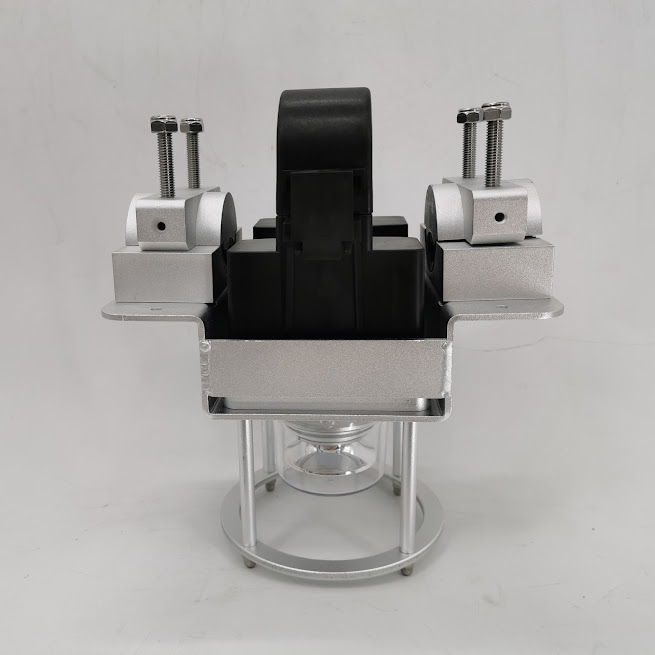What Are Those Balls That Hang on Power Lines?
When you are flying, the conductors and skyline become almost invisible against the terrain—especially the skyline wires. The colored plastic balls hanging on overhead electricity wires are called aerial marker balls, and they are installed along the length of wires to act as a visual warning so low-flying aircraft don’t run into them.
They're called visibility marker balls or marker balls.
You'll often find them near mountain passes, in the deep valley areas, near major freeway crossings and around airports. They weight about 17 pounds each. The marker balls are placed on power lines to make the conductor crossings visible to aircraft.
Overhead wire markers are safety instruments applied to the overhead power lines marking transmission lines and ropeways along the flight path during the day. Markers are often installed on overhead lines near airfields, or at river crossings where there is a possibility of float-equipped aircraft using the river. Some markers contain conductor marking lights or strobe lights to improve visibility at night or in fog.
The plastic balls that are commonly seen hanging from overhead power lines are called aerial marker balls, or simply marker balls. These are used to highlight structures (in this case, wires) when it’s impractical to make them visually recognizable (usually from a distance) by painting them.
In simple words, you could say that those colored balls are installed along the length of overhead wires so that the wires can be seen by pilots of low-flying aircraft. You will see such markers on extensive catenary wires that run across canyons, rivers, lakes and valleys.
These markers are supposed to be easily spotted from a few thousand meters away. That’s why these markers are are big enough (not less than 91 centimeters (36 inches)) to be observed from a distance and distinctively shaped (such as, spherical or cylindrical). Also, they are usually painted in colors that offer the maximum contrast with the background terrain. Orange, red and white are some of the most commonly used colors in such aerial markers.


CDT power line marker ball is made of high-grade Fiberglass Reinforced Plastics(FRP), diameter of 600mm and 800mm are available to meet different customers’ needs. A marking sphere should be of one color such as aviation orange, white and red. Generally, the marking spheres are placed on the highest line. Where there is more than one line at the highest level, white and red, or white and orange spheres should be displayed alternately. This alternating color scheme provides the most conspicuity against all back ground.
They're called visibility marker balls or marker balls.
You'll often find them near mountain passes, in the deep valley areas, near major freeway crossings and around airports. They weight about 17 pounds each. The marker balls are placed on power lines to make the conductor crossings visible to aircraft.
Overhead wire markers are safety instruments applied to the overhead power lines marking transmission lines and ropeways along the flight path during the day. Markers are often installed on overhead lines near airfields, or at river crossings where there is a possibility of float-equipped aircraft using the river. Some markers contain conductor marking lights or strobe lights to improve visibility at night or in fog.
The plastic balls that are commonly seen hanging from overhead power lines are called aerial marker balls, or simply marker balls. These are used to highlight structures (in this case, wires) when it’s impractical to make them visually recognizable (usually from a distance) by painting them.
In simple words, you could say that those colored balls are installed along the length of overhead wires so that the wires can be seen by pilots of low-flying aircraft. You will see such markers on extensive catenary wires that run across canyons, rivers, lakes and valleys.
These markers are supposed to be easily spotted from a few thousand meters away. That’s why these markers are are big enough (not less than 91 centimeters (36 inches)) to be observed from a distance and distinctively shaped (such as, spherical or cylindrical). Also, they are usually painted in colors that offer the maximum contrast with the background terrain. Orange, red and white are some of the most commonly used colors in such aerial markers.


CDT power line marker ball is made of high-grade Fiberglass Reinforced Plastics(FRP), diameter of 600mm and 800mm are available to meet different customers’ needs. A marking sphere should be of one color such as aviation orange, white and red. Generally, the marking spheres are placed on the highest line. Where there is more than one line at the highest level, white and red, or white and orange spheres should be displayed alternately. This alternating color scheme provides the most conspicuity against all back ground.










评论
发表评论